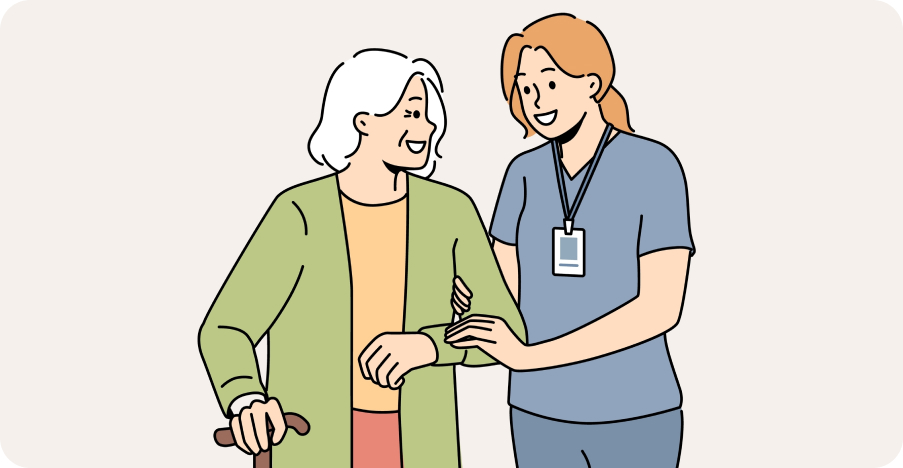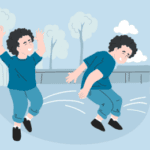
Blog
Frozen Shoulder Recovery Timeline and Tips
Author: DrSensory
July 21, 2025
Frozen Shoulder Recovery Timeline and Tips
The onset of a frozen shoulder can be baffling. It often starts with a minor ache and gradually progresses until simple, everyday tasks like reaching for an item on a high shelf, fastening a seatbelt, or even getting dressed become painful and difficult. This frustrating condition, medically known as adhesive capsulitis, can seem to appear out of nowhere and can significantly impact your daily life, leaving you feeling helpless and in pain.
Understanding the typical recovery timeline and the steps you can take to manage symptoms is the key to navigating this journey. Frozen shoulder is a condition that generally resolves on its own, but the path to recovery can be long and challenging. With the right knowledge, exercises, and professional guidance, you can actively participate in your healing process, reduce pain, and restore your shoulder’s mobility much more effectively.
This guide will break down what frozen shoulder is, detail the distinct stages of recovery, provide gentle exercises to improve mobility, and clarify when it’s time to seek professional help.
What Is Frozen Shoulder?
Frozen shoulder, or adhesive capsulitis, is a condition characterized by stiffness, pain, and a gradual loss of active and passive range of motion in the shoulder joint. It occurs when the strong connective tissue surrounding the shoulder joint—known as the shoulder capsule—becomes thick, stiff, and inflamed. Over time, tight bands of tissue, or adhesions, develop, which severely restricts movement.
The exact cause of frozen shoulder is not fully understood. However, it is more likely to occur in individuals between the ages of 40 and 60, and it is more common in women. The risk of developing frozen shoulder also increases after a prolonged period of shoulder immobilization, such as after an arm injury, surgery, or stroke. People with certain medical conditions, like diabetes or thyroid disease, also have a higher incidence of frozen shoulder.
The condition affects the glenohumeral joint, a ball-and-socket joint that allows for a wide range of arm movements. When the capsule tightens, it shrinks around the joint, drastically limiting your ability to rotate, lift, and reach with your arm.
Stages of Frozen Shoulder Recovery
The recovery process for a frozen shoulder is notoriously slow and is typically described in three distinct stages. Understanding which stage you are in can help you and your healthcare provider tailor your treatment for the best possible outcome.
Stage 1: The Freezing Stage (Painful Stage)
- Duration: 2 to 9 months
- Characteristics: This initial stage is marked by a gradual onset of a diffuse, aching shoulder pain. As the pain worsens, your shoulder’s range of motion begins to decrease. The pain is often more severe at night and can disrupt sleep. During this phase, inflammation is high, and any movement of the shoulder can be intensely painful.
Stage 2: The Frozen Stage (Stiff Stage)
- Duration: 4 to 12 months
- Characteristics: In the frozen stage, the sharp pain may begin to subside. However, the shoulder becomes significantly stiffer, and the range of motion becomes more limited. While the constant, aching pain might lessen, you will likely still experience pain at the end-ranges of your movement. Daily activities become extremely difficult during this phase due to the profound stiffness.
Stage 3: The Thawing Stage (Recovery Stage)
- Duration: 6 months to 2 years (or longer)
- Characteristics: This is the final stage, where the shoulder’s mobility gradually begins to improve. The stiffness starts to resolve, and you will slowly regain your range of motion. The pain continues to decrease, and you can begin to perform more activities with greater ease. Full recovery can be slow, but consistent, gentle stretching is crucial during this phase to help restore function.
Exercises to Improve Mobility and Reduce Pain
While it may seem counterintuitive to move a painful joint, gentle exercises are a cornerstone of frozen shoulder treatment. The goal is to stretch the shoulder capsule and improve range of motion without causing further inflammation.
Important: Always warm up your shoulder before stretching, perhaps with a warm shower or a heating pad for 10-15 minutes. Perform these exercises gently and stop if you feel sharp pain.
1. Pendulum Stretch
This is a gentle exercise perfect for the early stages.
- How to do it: Stand and lean over slightly, allowing the affected arm to hang straight down. You can rest your other hand on a table for support.
- Relax your shoulder and gently swing the arm in small circles—first clockwise, then counter-clockwise.
- Next, swing it forward and backward, then side to side.
- Perform each movement for 30 seconds. Do not use your muscles to power the swing; let gravity and momentum do the work.
2. Wall Crawl
This exercise helps improve forward flexion.
- How to do it: Stand facing a wall, about three-quarters of an arm’s length away.
- Place the fingertips of your affected arm on the wall at waist level.
- Slowly “walk” your fingers up the wall as high as you can comfortably go, using your fingers to do the work rather than your shoulder muscles.
- Hold the stretch for 15-20 seconds, then slowly walk your fingers back down.
- Repeat 5-10 times.
3. Towel Stretch
This exercise helps improve internal rotation.
- How to do it: Hold one end of a towel behind your back and grab the opposite end with your other hand. The affected arm should be the one holding the bottom of the towel.
- Gently pull the towel upward with your top arm to stretch the affected arm. You will feel a stretch in the front or side of your frozen shoulder.
- Hold for 20-30 seconds.
- Repeat 5 times.
4. Cross-Body Reach
This stretch targets the posterior part of the shoulder capsule.
- How to do it: Sit or stand. Use your good arm to lift your affected arm at the elbow.
- Gently bring it up and across your body, applying gentle pressure to stretch the shoulder.
- Hold the stretch for 15-30 seconds.
- Repeat 5-10 times.
5. Outward Rotation Stretch
This exercise uses an elastic band to improve external rotation.
- How to do it: Hold a resistance band between your hands with your elbows at your sides, bent at 90 degrees.
- Keeping the elbow of your affected arm pinned to your side, rotate the lower part of that arm outward a few inches.
- Hold for 5 seconds, then return to the start.
- Repeat 10-15 times.
When to Seek Professional Help
While many people can manage a frozen shoulder with home exercises and patience, professional guidance is often necessary for a safe and effective recovery. A physical or occupational therapist can provide a structured rehabilitation program tailored to your specific stage and symptoms.
You should consult a professional if:
- Your pain is severe and not managed by over-the-counter pain relievers.
- You are not seeing any improvement in pain or range of motion after several weeks of gentle stretching.
- You are unsure how to perform exercises correctly or safely.
- Your loss of function is significantly impacting your ability to perform daily tasks at home or at work.
- You have an underlying condition like diabetes, which can make recovery more challenging.
A therapist can offer manual therapy techniques to stretch the joint capsule, guide you through a progressive exercise program, and provide pain-management strategies. In some persistent cases, a doctor may recommend other treatments, such as corticosteroid injections to reduce inflammation or, in rare instances, a surgical procedure to release the tight capsule.
Frequently Asked Questions (FAQ)
❓What is the fastest way to recover from a frozen shoulder?
There is no “fast” way to recover from a frozen shoulder, as the condition follows a natural, slow timeline. However, the most effective approach is a combination of pain management, consistent and gentle stretching exercises, and physical therapy. Early intervention can help manage pain and may shorten the overall recovery period.
❓Should I avoid all movement with a frozen shoulder?
No, complete immobilization can make the stiffness worse. The key is gentle, controlled movement within a pain-free range. The goal is to stretch the shoulder capsule, not to push through sharp pain, which can increase inflammation. Pendulum swings are a great place to start.
❓Can a frozen shoulder come back after it heals?
It is rare for a frozen shoulder to recur in the same shoulder once it has fully resolved. However, it is possible for it to develop in the opposite shoulder. Studies show this happens in about 5-30% of individuals, sometimes years later.
❓How can I sleep with a frozen shoulder?
Sleeping can be very painful, especially in the “freezing” stage. Try sleeping on your back with a pillow propped under your affected arm to keep it in a neutral position. If you are a side-sleeper, sleep on your good side and hug a pillow to support your affected arm in front of you.
❓Can I get a steroid shot for a frozen shoulder?
Yes, a corticosteroid injection directly into the shoulder joint is a common treatment, particularly during the painful “freezing” stage. The injection can significantly reduce inflammation and pain, which in turn can make it easier to perform the necessary stretching exercises in physical therapy.
related blogs
Your child is constantly moving, crashing into furniture, or having meltdowns in response to seemingly minor things like a loud
Your toddler refuses to wear certain clothes, has huge meltdowns in noisy places, or is an extremely picky eater, limited
Your child seems to miss verbal instructions, struggles to follow conversations in noisy environments, and often asks "what?" even when
On the surface, autism and Ehlers-Danlos syndrome (EDS) might seem like two entirely unrelated conditions. One is a neurodevelopmental condition
The intense head pain begins, lights feel blindingly bright, and every sound seems amplified to an unbearable level. You retreat











































































